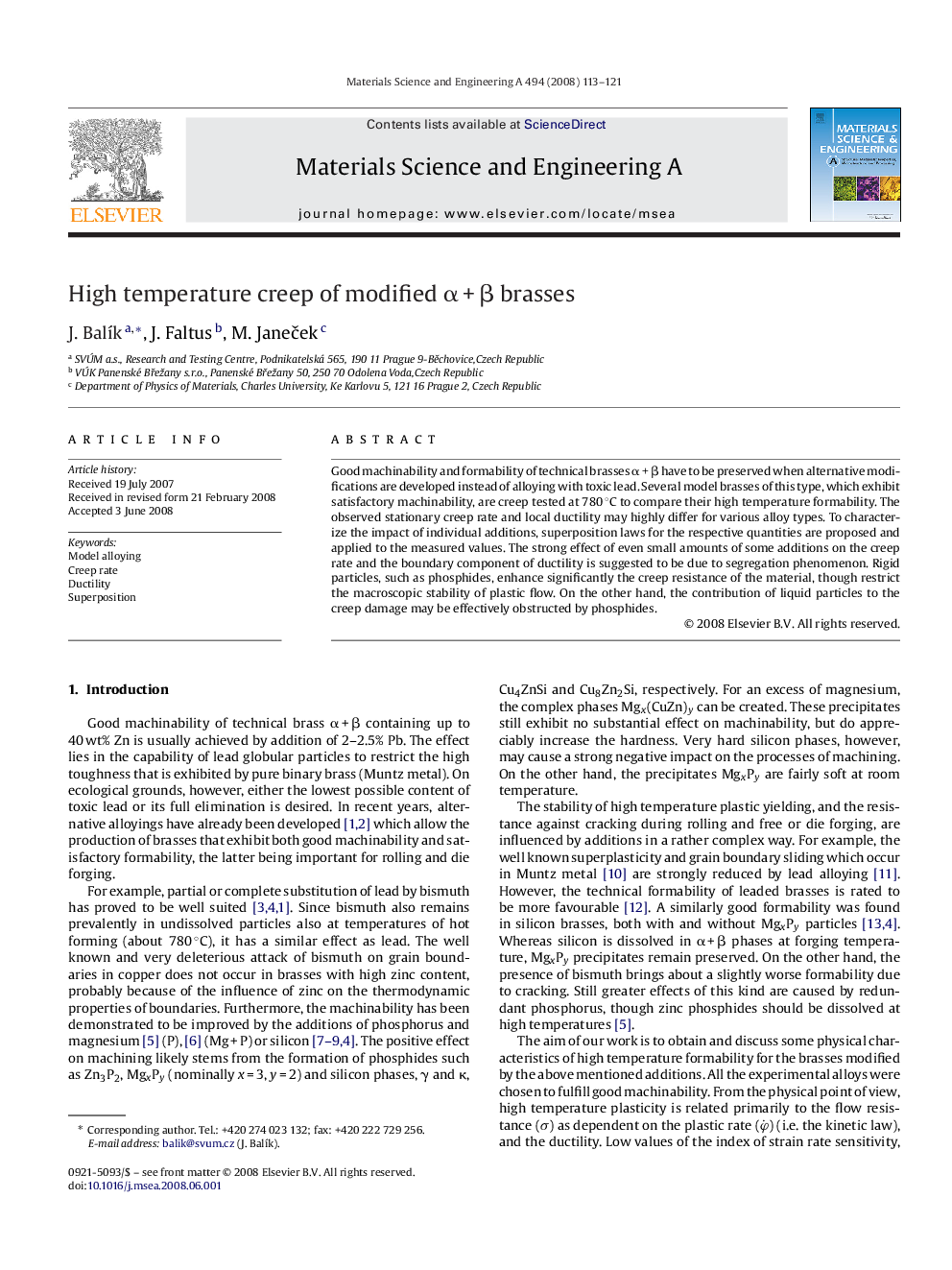| Article ID | Journal | Published Year | Pages | File Type |
|---|---|---|---|---|
| 1581957 | Materials Science and Engineering: A | 2008 | 9 Pages |
Abstract
Good machinability and formability of technical brasses α + β have to be preserved when alternative modifications are developed instead of alloying with toxic lead. Several model brasses of this type, which exhibit satisfactory machinability, are creep tested at 780 °C to compare their high temperature formability. The observed stationary creep rate and local ductility may highly differ for various alloy types. To characterize the impact of individual additions, superposition laws for the respective quantities are proposed and applied to the measured values. The strong effect of even small amounts of some additions on the creep rate and the boundary component of ductility is suggested to be due to segregation phenomenon. Rigid particles, such as phosphides, enhance significantly the creep resistance of the material, though restrict the macroscopic stability of plastic flow. On the other hand, the contribution of liquid particles to the creep damage may be effectively obstructed by phosphides.
Keywords
Related Topics
Physical Sciences and Engineering
Materials Science
Materials Science (General)
Authors
J. BalÃk, J. Faltus, M. JaneÄek,
